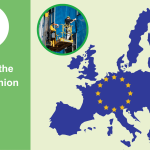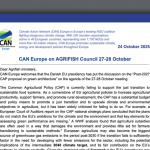The forthcoming update of the EU Industrial Strategy provides a welcome opportunity to re-frame and prioritise actions from the 2020 strategy. With Member States drafting national recovery and resilience plans, the European Commission has a chance to clearly articulate what it means to “build back better” –setting out a plan for how to build an inclusive, future-proof, crisis-proof, resource-efficient economy where there are no net emissions of greenhouse gases in 2050 and where economic growth is decoupled from resource use.With the new EU 2030 emissions reduction target of at least -55%, the updated strategy must clarify how industry will contribute to reach the 2030 objective and how it can accelerate the green transition towards climate neutrality. The 2020 industrial strategy failed to provide a coherent policy framework for shifting EU industry onto a pathway compatible with the EU’s climateneutrality by 2050 position. We cannot afford to miss this chance again. The EU can and must do much more to leverage the impact, size and integration ofits single market to become a global industrial market creator–seizing the opportunityof the green transition and driving it globally.
- A strategy that delivers on the European Green Deal. The updated strategy should lay the groundwork for this year’s Fit for 55 legislative package, indicating how the Commission plans to ensure a mix of demand-pull and technology-push policies across the package. The strategy can help weave together the different policies into a coherent framework, sending a strong signal to industrial and manufacturing sectors on what will be expected of them. Moreover, it mustcomplement and be coherent with the Sustainable Products Initiative, the Chemicals Strategy, the promised zero pollution ambition commitment and associated action plan, the revised Industrial Emissions Directive as the zero-pollution tool,PRTR Review, and theBiodiversity Strategy.
- Strong governance to steer the transition. The industrial strategy should kick-off a process rather than simply lista set of policies: it should set concrete andambitious milestones for industrial “ecosystems” on their contribution to achieving European Green Deal goals. This will require a strong governance framework to monitor progress, define the targets androadmaps, establish systems for evaluation and reporting, and support access to information and transparency for civil society and the private sector. The strategy should also embrace transparency across the value chain (e.g. on harmful substances), reflect progress instandard-setting(e.g. determination of Best Available Techniques) and promote outcome-oriented performance criteria for decision makers to encourage ambitious implementation.
- An integrated approach across decarbonisation, circularity and zero pollution. There has beena narrow focus to date on industrial decarbonisation through fuel shifts, energy efficiency and CCS/CCU. The updated strategy needs to take a systemic approach, addressing multiple environmental and social crises simultaneously, seeking synergies between issues. Industrial efforts must prioritise product and process ecodesign, shifts to low-impact materials, and mainstreaming of green engineering and green chemistry principles in business decision-making. Many of these demand-side levers are already available today –allowing us to make progress on industrial transformation in the next decade already. Sectoral roadmaps should include sectoral targets on reduced resource and energy use.
- Recognising civil society as a key stakeholder in the industrial transition. Given the scale of transformation needed in products, processes and corporate and public behaviour, civil society must explicitly be an integral partner in the development of policies for industrial transition. The updated strategy shouldexplicitly require the involvement of civil society organisations and independent experts in processes to deliver industrial transformation pathways. These pathways must address multiple social and ecological challenges, and balance public, societal and private interests in governance bodies.



